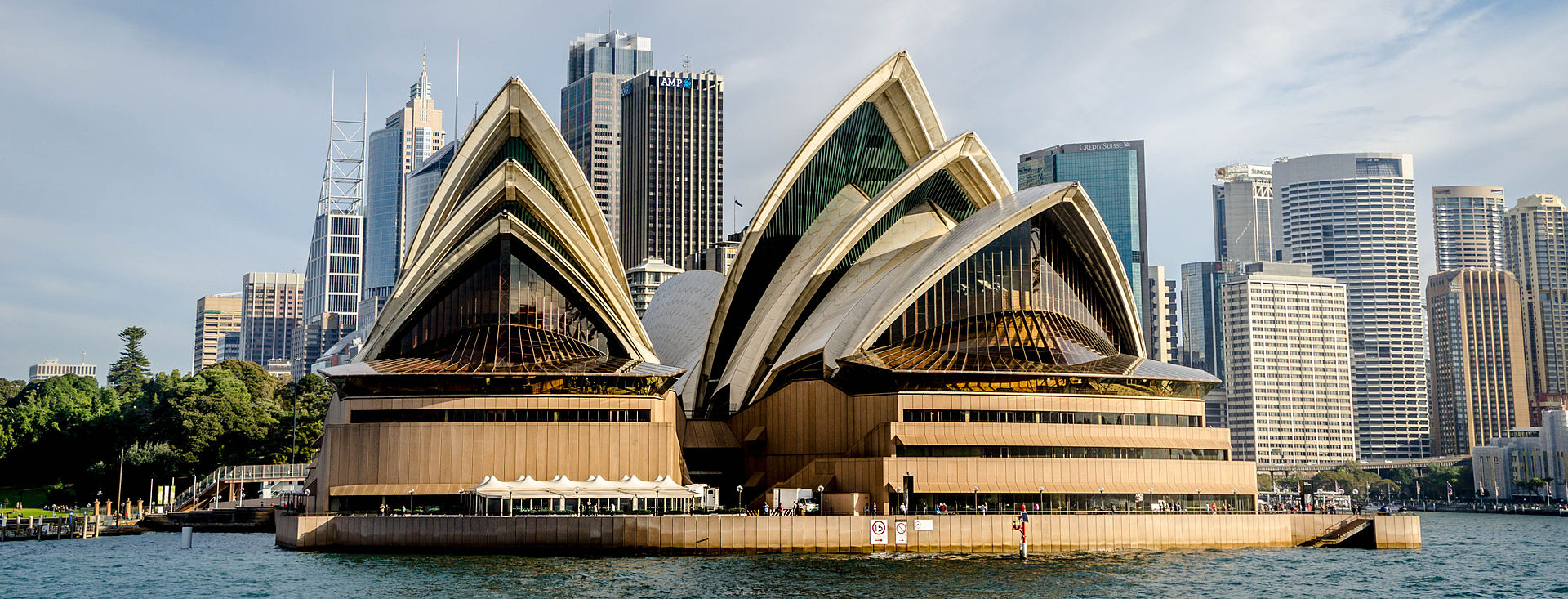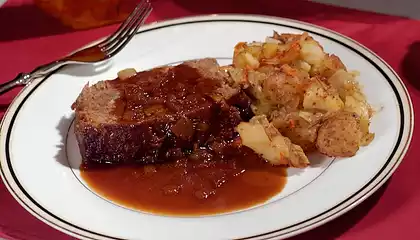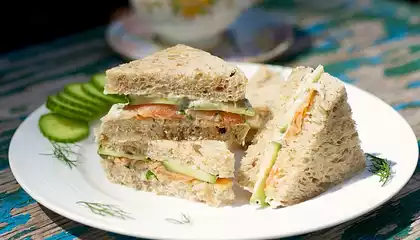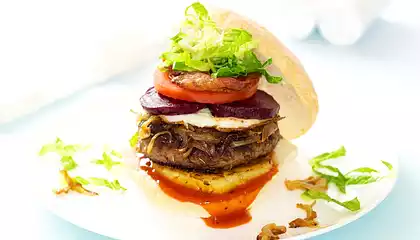Australian Cooking Measurements

Australian and North American recipe conversions. Handy tables for measuring dry and liquid ingredients, explanations of Aussie vs. American cooking terms, oven temperatures, Aussie vs. American common terms for ingredients.
Contents
Wherever you live in the world, you can use our recipes with the help of our easy-to-follow conversions for all your cooking needs. These conversions are approximate only. The difference between the exact and approximate conversions of liquid and dry measures amounts to only a teaspoon or two, and should not make a noticeable difference to your cooking results.
Measuring Equipment Notes
The difference between measuring cups internationally is minimal within 2 or 3 teaspoons difference. (For the record, 1 Australian measuring cup will hold approximately 250 ml.)
The most accurate way of measuring dry ingredients is to weigh them. When measuring liquids use a clear glass or plastic jug with metric markings.
1 Teaspoon = 5ml 1 Tablespoon = 20ml
NOTE: NZ, CANADA, USA and UK ALL USE 15ml TABLESPOONS.
All cup and spoon measurements are level.
Measuring Cups and Spoon Conversion Charts
In Australia measuring cups are of a slightly different size than their North American counterparts. Here is a handy chart to help convert between the different measuring amounts.
| American | Australian |
|---|---|
| 1 cup | 1 cup plus 2 tablespoons |
| 1 teaspoon | 5 milliliters |
| 1 tablespoon | 1 tablespoon plus 1 1/2 teaspoons |
| 1 tablespoon | 20 milliliters |
| 1 cup | 250 milliliters |
Dry Measures
| Metric | Imperial |
|---|---|
| 15g | 1/2 ounce |
| 30g | 1 ounce |
| 60g | 2 ounces |
| 100g | 3 1/2 ounces |
| 124g | 4 ounces |
| 155g | 5 ounces |
| 220g | 7 ounces |
| 250g | 1/2 pound |
| 280g | 9 ounces |
| 315g | 10 ounces |
| 345g | 11 ounces |
| 375g | 12 ounces |
| 440g | 14 ounces |
| 500g | 16 ounces (1 pound) |
| 1 kg | 32 ounces (2 pounds) |
Liquid Measures
| Metric | Imperial |
|---|---|
| 30ml | 1 fluid oz |
| 100ml | 3 fluid oz |
| 125ml | 4 fluid oz |
| 150ml | 5 fluid oz (1/4 pint) |
| 150ml | 1 gill |
| 185 ml | 6 fluid oz |
| 250ml | 8 fluid oz |
| 300ml | 10 fluid oz |
| 300ml | 1/2 pint |
| 500ml | 16 fluid oz |
| 600ml | One pint |
| 750ml | 24 fluid oz |
| 1000ml | 32 fluid oz |
| 1 litre | 1 3/4 pints |
| 1200ml | One quart (gallon) |
Ingredient Terms
| Australian | American |
|---|---|
| Aubergine | Eggplant |
| Bacon Rashers | Canadian Bacon |
| Biscuits | Cookies |
| Boiling fowl | Stewing fowl |
| Broad beans | Fava beans |
| Cake mixture | Cake batter |
| Castor sugar | superfine sugar |
| Celery stick | Celery stalk |
| Chipolata sausages | mini sausages |
| Cornflour | Cornstarch |
| Courgette | Zucchini |
| Chips | French fried potatoes |
| Castor Sugar | Superfine Sugar |
| Capsicum | Sweet or Bell Pepper |
| Copha 2 | Coconut butter |
| Cornflour | Cornstarch |
| Demerara sugar | Light brown sugar |
| Desiccated coconut | Flaked coconut |
| Digestive biscuits | similar to Graham crackers3 |
| Double cream | Whipping cream |
| Essence | Extract |
| Fats | Shortening |
| Flaked almonds | Slivered almonds |
| Flour (plain) | All Purpose Flour |
| Flour (self raising) | Self Rising Flour |
| Flour (wholemeal) | Whole Wheat Flour |
| Frosting sugar | Powdered sugar |
| Gelatine | Unflavoured Gelatine |
| Ghee | Clarified Butter |
| Glaced | Candied |
| Glacé Cherries | Maraschino Cherries |
| Golden syrup 4 | Dark corn syrup |
| Icing | Frosting |
| Jam | Preserves |
| King Prawns | Jumbo Shrimp |
| Little boys | Cocktail weiners/frankfurts |
| Mince/mince meat | Ground beef |
| Nut of butter | Pat of butter |
| Paw Paw | Papaya |
| Prawns | Shrimp |
| Ratafia biscuits | Almond flavoured cookies |
| Roast Potatoes | Oven browned potatoes |
| Rockmelon | Cantaloupe |
| Shallots | Scallions |
| Sugar | Granulated sugar |
| Swiss Roll Tin | Jelly Roll Pan |
| Stock Cubes | Boullion Cubes |
| Streaky bacon | Bacon slices |
| Sultanas | Golden Seedless Raisins |
| Icing Sugar | Confectioners Sugar |
| Scone | Shortcake |
| Self raising flour | All-purpose flour including baking powder |
| Single cream | Light cream |
| Soft brown sugar | Light brown sugar |
| Spring onion | Scallion or green onion |
| Stewing steak | Braising beef |
| Stoned raisins | Seedless raisins |
| Sultanas | Seedless white raisins |
| Treacle 5 | Molasses |
| Unsalted butter | Sweet butter |
Odd Measures
| Term | Translation |
|---|---|
| 10 eggs | 1 pound |
| dash of pepper | 3 good shakes |
| 4 cups flour | 1 pound |
| 4 tablespoons liquid | 1/4 cup |
| 1 gill | 1/2 cup |
| 2 gills | 1 cup liquid |
| 2 gills | 1/2 pint |
| 4 gills | 1 pint |
| 2 pints | 1 quart |
| 4 tablespoons liquid | 1/4 cup |
| 1 even cup butter | 1/2 lb |
| 1 heaped teaspoon butter | 2 ounces |
| 2 cups granulated sugar | 1 pound |
| 2 1/2 cups icing sugar | 1 pound |
| 1 pint liquid | 1 pound |
| 1 spoonful | heaped spoonfull |
| 1/2 spoonful | level spoonfull |
Temperature Conversions
Refer to our Metric Conversion Chart for more detailed metric converstions including standard oven temperatures.
| Reference | Fahrenheit | Celsius |
|---|---|---|
| Very cool oven | 225°-250° | 107°-121° |
| Cool oven | 275°-300° | 135°-149° |
| Very moderate oven | 325° | 163° |
| Moderate oven | 350°-375° | 177°-191° |
| Moderately hot oven | 400° | 205° |
| Hot oven | 425°-450° | 218°-233° |
| Very hot oven | 475° | 246° |
Cooking Equipment
| Australian | American |
|---|---|
| Baking sheet or tray | Cookie sheet |
| Case | Pie shell |
| Frying pan | Skillet |
| Girdle | Griddle |
| Grate | Shred |
| Greaseproof paper | Wax paper |
| Grill | Broil |
| Gut | Clean |
| Knead | Punch down |
| Lamington Tin | 13" x 9" x 2" baking dish |
| Large pot | Dutch oven or similar |
| Mince | Grind |
| Polythene | Plastic wrap |
| Pudding cloth | Cheesecloth |
| Ring Tin | Tube Pan |
| Roasting tin | Roasting pan with rack |
| Sandwich tins | Round-layer pans |
| Sieve | Sift |
| Stewpan or pan | Kettle |
| Whisk | Beat/whip |
| Patty Cups | Paper Cupcake Holders |
| Greaseproof Paper | Wax Paper |
| Tea Towel | Dish Towel |
More Cooking Helpers
Scant = Not quite full measure
Tammy Cloth = A fine woollen cloth
Fats, dripping, lard, etc can be substituted with your selected oils
Clarified Fat = Melt fat then add raw potato cut in quarter-inch slices and allow the fat to gradually heat. When the fatceases to bubble and potatoes are browned, strain fat through double cheesecloth into a pan for use. Potato will absorb fat odours and sediment.
All oven temperatures are based on the standard wood oven, gas oven and electric oven.
Second Stock = Made from the meat and the bones that remain after the first stock is strained off. Fresh water and veges are added.
Flour = Unless otherwise stated, "flour" refers to plain flour.
Red or Green Pepper = Capsicum
Stewpan = Large frypan type utensil with lid used for stews and casseroles
Muslin Bag = Cloth bag used for holding additives and spices in for submerging in casseroles, soups, stews, etc. They allow you to flavour foods with whole spices and herbs without having to strain them out before serving.
Quantities for Catering
Three quarts of milk is the usual allowance for afternoon tea for 100 people.
One pound of sugar is usually ample for one hundred people.
One quart of ice cream will be enough for 18 small plates.
One quart of pudding or jelly is enough for 12 small servings at a party
One loaf of bread will cut into 36 slices, making 18 rounds of sandwiches which will cut into 72 small ones.
A half pound of butter creamed is sufficient to spread a loaf of bread for sandwiches or six dozen scones.
Three pounds of cocktail frankfurts will serve 40 people
Oddiments and Explanations
Level teaspoon = Draw a knife over edges.
Drop Dough = One measure of liquid to two measures of flour.
Stiff Dough = One measure of liquid to three measures of flour.
Cooking Broiling = Applying intense heat by a fire to sear the surfaces of fish or meat, then reducing heat until food is cooked.
Temperature is 375 to 400 degrees Fahrenheit. As in "bring the oven up to temperature"
Fats or cooking oils should be hot enough to prevent the cooking food from absorbing the oils.
Frying = Cooking in deep fats or oils
Poaching = Cooking at 160-180 degrees Fahrenheit
Stewing = Cooking at 186 degrees Fahrenheit
Braising = Cooking food in slow oven with moisture surrounding food in the pan.
Simmering = Cooking food in water below boiling point or about 185 degrees Fahrenheit
Milk is sterilized at 212 degrees Fahrenheit holding that temperature half an hour.
Milk is pasteurized at 165 Fahrenheit holding at that temperature twenty minutes.
Milk scalds at 196 degrees Fahrenheit when in double boiler.
Milk boils at 214 degrees Fahrenheit
-
"Sydney Opera House at Sunset" by Hpeterswald - Own work. Licensed under CC BY-SA 3.0 via Wikimedia Commons - link ↩
-
Copha is mainly used to make chocolate confectionary but can be found in variety of products. Commonly called "Coconut Butter" in the U.S. The term "butter" is exclusive in Australia to the dairy industry, with a few minor exceptions such as peanut butter. Vegetable shortening can be a good substitution. ↩
-
"Sydney Harbour Bridge from Circular Quay" by JJ Harrison ([email protected]) - Own work. Licensed under CC BY-SA 3.0 via Wikimedia Commons - link ↩
-
In recipes calling for digestive biscuits, it is common to substitute graham crackers in the United States. According to Charles Panati, the original graham cracker is called a "digestive biscuit" in the United Kingdom. - Digestive Biscuits ↩
-
Golden Syrup is made from cane sugar and may only be similar to Corn Syrup. Australia's CSR Sugars - Golden Syrup ↩
-
Treacle, or molasses, is any uncrystallized syrup made during the refining of sugar. ref: Treacle, Australia's CSR Sugars - Treacle ↩







Comments
Hi,
I'm Australian. I just wanted to let you know you have a lot of errors in your conversion of Australian Cooking Measurements page where you list conversion to American ingredients. For example, Golden Syrup is NOT corn syrup. Molasses is NOT treacle. We do not call all our sugar castor sugar. We have sugar, which is granulated, and castor sugar, which is superfine sugar. Chipolata sausages are not cocktail sausages - chipolatas are mini sausages, but the red cocktail sausages are basically mini hotdog sausages and we call them cocktail frankfurts or little boys! :)
There are quite a number of other errors, but I'm happy to help you out with these if you're interested in having your list more accurate. Sue in Australia
Sue from Australia again. I can be contacted on [email protected] if you'd like help correcting your Aus vs American food list.
I would encourage the editor of this website to consult an Australian regarding what we call items here. There are even variations across Australia. Take up Sue's offer, this website needs help.
The editors did email Sue and did not receive a response.
Please feel free to leave any corrections in the comments here and we're more than happy to update straight away.
So how do we know if it has been updated?
What measure is a "Bottle top"?
Yeah - lots of mistakes here. Broad Beans are Favas - not Limas. Digestive Biscuits are NOT Graham Crackers.
@Mair - last updated date appears at the end of the article
@anonymous: broad beans updated to Fava beans. According to all sources we could find it is quite common for Americans to substitute Graham crackers for Digestive biscuits - added a reference for more information. Having used both Digestives and Graham crackers they are indeed very similar although not exactly the same.
How much is a stick of butter
Anne, Mebourne, Australia. How many gms in a stick of butter
What is the Australian gm equivalent to in the metric or imperial system
Joan Faulkner
Dartmouth, Nova Scotia
[email protected]
Zucchini is zucchini in Australia too. Courgette is European .
Thanks for trying. Still a little way to go.
Not sure how accurate most of this is because half of the Ingredient Terms are wayyy offfpr Aus so it makes me think that the measurements are wrong too
Australia has baking paper not Greaseproof paper
Australia has baking dish not Lamington Tin
Australia has Plastic wrap not Polythene
Australia has Sift not sieve
Australia has kettle not Stewpan
Australia has eggplant not Aubergine
Australia has way more then just Bacon Rashers (no 1 like the rashers)
Australia has Cornstarch
Australia has zucchini not Courgette
Australia has Copha and Coconut butter
Australia has brown sugar not Demerara sugar
Australia has Whipping cream
Australia has Essence and Extract
Australia has Shortening
Australia has powered sugar and Frosting sugar
Australia has frankfurts nor Little boys
Australians call Paw Paws Papaya
Australia has Prawn & Shrimp (why else would we say shrimp on the BBQ)
Australia has Rockmelon and Cantaloupe
Australia has Sugar and Granulated sugar
Australia has Icing Sugar and Confectioners Sugar
Australia has Scones and Shortcake
Australia has light cream not Single cream
You've never been in Australia have you? Can you not post about Australia if you don't even know anything about it or what's in it
Yes we have cornstarch but it's called cornflour
Light cream is not single cream - single cream is normal thickened cream or whipping cream like Bulla - light cream is fat reduced.
Shrimps are really small prawns that we put in fried rice and are purchased without shells and tails. Prawns are the ones that we are supposed to "put on the BBQ" although I for one would not do such a thing.
Like someone said above - each state in Australia has different words for different things.
SA says "scallop" Vic says "potato cake" for example
Powdered sugar/confectioners sugar is our icing sugar (not icing mixture).
We do have Demerara sugar - I bought some today.
We call frankfurts "hotdogs" and little franks "little boys"
Our scones are your biscuits.
All I was looking for was when a US cook says "a cup of butter" or "stick of butter" what is it in grams? Cause pushing butter into a cup is a little inefficient.
Hi, could someone help me? Someone recently posted a recipe and it called for 2 lots of sugar? What does that mean?
A stick of butter is 125g Australia
Could someone please tell me what 761grams of liquid would be for me in mls have an American recipe and can't work it out.
1 American cup is not 1 Australian cup plus two tablespoons. An Australian cup is 250 mL. An American cup is 225 mls.
WE generally speak of eggplant and zucchini not aubergine and courgette
As for shrimps v prawns, Australia exclusively used the term prawns, until the famous tourism advert featuring Paul Hogan went to air in North America. At that point he exhorted potential tourists to come down and throw a shrimp on the barbie. The word shrimp was chosen as it was thought that the average North American would probably ask "what the heck is a prawn?" as the word was not generally used in the Northern Hemisphere.
For water, 761g = 761 mL. For most things, just a straight swap will do.
Hi just want to know how much 0.6666 is in cups rice
HOW MUCH IS 1 TUB OF TOMATO PASTE
Jamie Oliver's spinach pancake recipe calls for "a mug of flour".
Care to workshop that one for me?
In Australia. Using dry ingredients. Does “teaspoon” mean it should be level or rounded. I really need this clarification when making plain flour into self raising. Same for rounded or level Tablespoon. It seems to vary a lot. Always understood level meant 1/2 a spoonful. Please help.
these conversions are all wrong.
shallots is a different kind of onion, that scallions...
and much more...
this page should be revised
Yes definitely needs some work.
I've always understood level to mean flat at the top. Use the back of a knife, wipe it across the measuring spoon/cup to make it (the flour/sugar etc) flat across the top. Rounded would be a lazy spoon/cup - generally flat, but not perfectly and heaped would be a pile on the top.
This is really rude. As an Australian, I found it reasonably accurate for information I need - except for 1 cup (250ml) in Australia is 1 US cup (240ml) + two teaspoons (5ml each), not tablespoons.
1 stick = 4 oz or 113 grams
1 cup of butter = 8 ounces = 16 tablespoons = 226 grams
Is that 8 ounces in weight or 8 fluid ounces in volume?